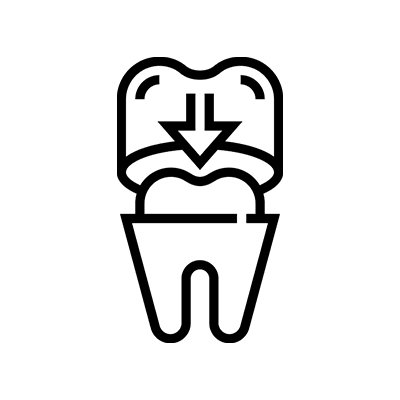
Oxnard Dentistry – Protecting and Restoring Smiles in Oxnard, CA
A cracked or chipped tooth can jeopardize your oral health and confidence. At Oxnard Dentistry in Oxnard, California, Dr. Kourosh Keihani, DDS, provides expertly crafted dental crowns to restore the integrity, function, and appearance of compromised teeth. With attention to detail and a patient-first approach, Dr. Keihani ensures crowns look natural and feel comfortable. Call 805-604-9999 or book an appointment online today to restore your smile.
What is a Dental Crown?
A dental crown is a custom-made cap designed to cover a damaged tooth, restoring its shape, size, and strength while blending seamlessly with your natural teeth. Crowns not only protect the tooth but also improve your smile’s appearance.
When is a Dental Crown Needed?
Dr. Keihani may recommend a dental crown to:
- Repair cracked, broken, or worn teeth
- Protect a decayed tooth from further damage
- Cover a discolored or misshapen tooth
- Replace a missing tooth with a crown supported by a dental implant
- Hold a dental bridge securely in place
Crowns are a versatile solution for various dental concerns, providing long-term durability and aesthetic benefits.
What Types of Crowns Are Available?
Permanent crowns are available in a variety of materials, each with unique benefits:
- Metal: Durable and long-lasting, ideal for molars.
- Porcelain-Fused-to-Metal (PFM): Combines strength with a natural appearance.
- Ceramic or Zirconia: Highly aesthetic, perfect for visible front teeth.
- Resin Composite: Budget-friendly but less durable.
- Stainless Steel: Typically used for temporary crowns.
Dr. Keihani will discuss the best material for your crown based on your needs, budget, and the location of the tooth.
How is a Crown Applied?
The process of getting a dental crown typically involves two visits:
- First Visit:
- Preparation: Dr. Keihani removes the damaged outer layer of the tooth and any decay. If necessary, he may reinforce the tooth with a post and dental filling to create a strong foundation.
- Impression: An impression of your tooth is taken to ensure the permanent crown fits perfectly.
- Temporary Crown: A temporary crown made of stainless steel or acrylic-based material is placed to protect the tooth while your permanent crown is fabricated.
- Second Visit:
- Placement: About two weeks later, your permanent crown arrives from the lab. Dr. Keihani cements it in place, ensuring a secure and comfortable fit.
- Comfort: A local anesthetic is used to numb the area, ensuring a painless procedure.
After the procedure, you may experience mild sensitivity, which typically resolves quickly.

Restore Your Smile with a Custom Dental Crown
If you need a dental crown to protect or restore a damaged tooth, Dr. Keihani and his team at Oxnard Dentistry are here to help. Call 805-604-9999 or book your appointment online today to regain a healthy, confident smile.


